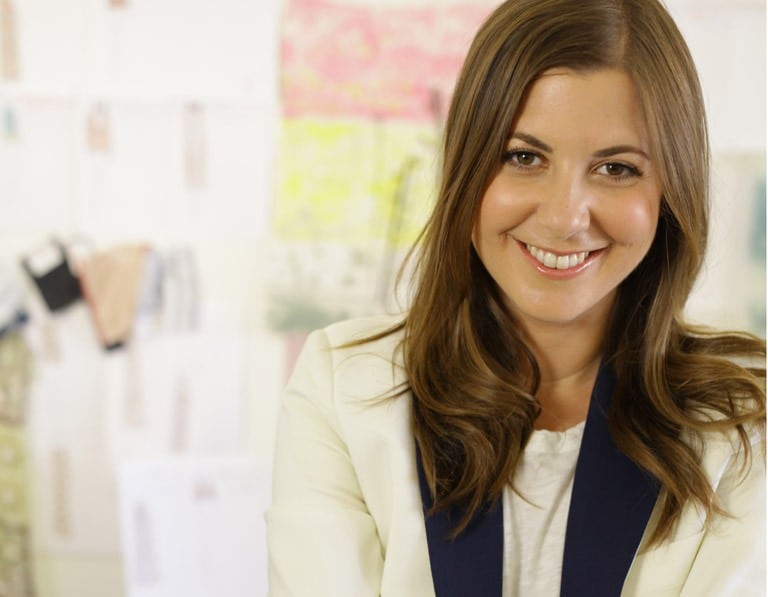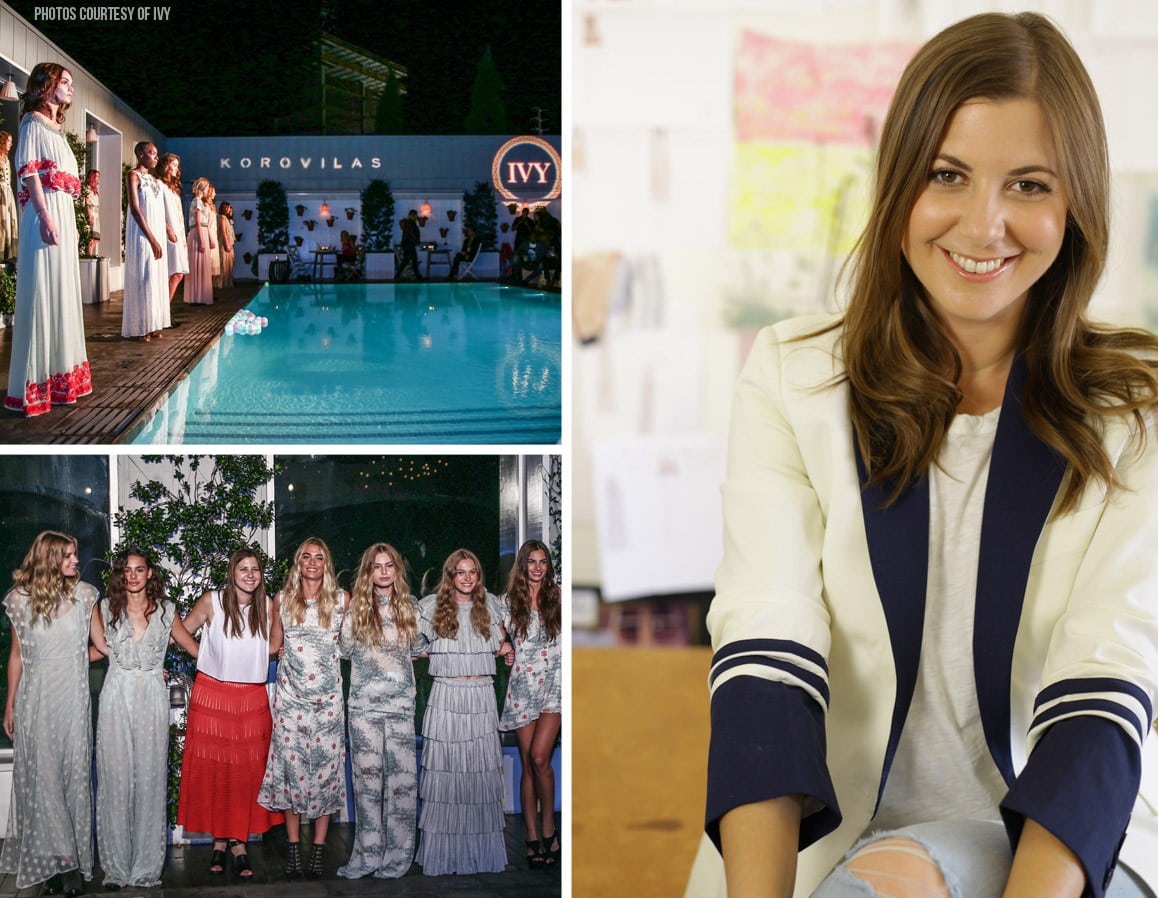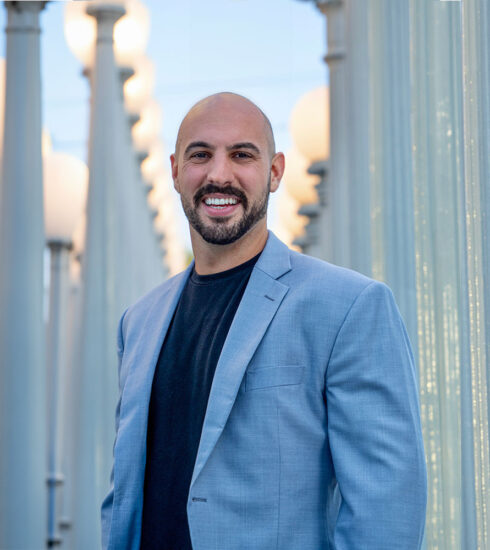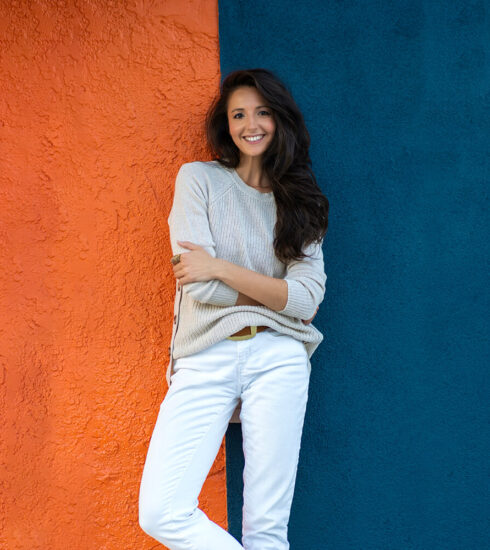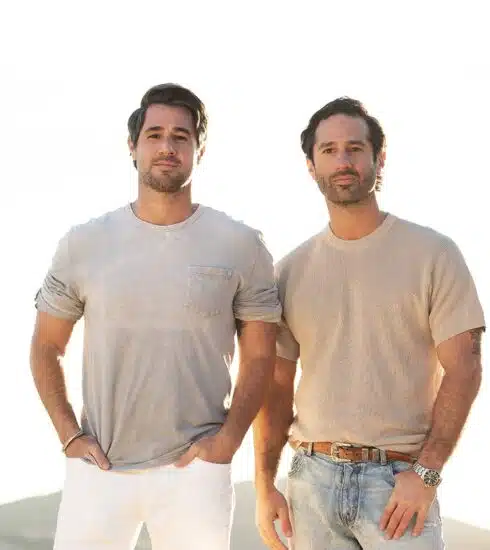Maria Korovilas Conquers the LA Fashion Scene
It’s easy to fall in love with Maria Korovilas. Like the whimsical laces and patterns of her collection, she’s ethereal.
Since Maria launched her eponymous line in 2012, k o r o v i l a s has been called by Women’s Wear Daily “one of the most promising new lines out of Los Angeles.” Her clothes appear in tastemaker boutiques such as Satine in LA and major retailers including Neiman Marcus and Nordstrom’s via C. But for all her success, she’s floating above the heavier trends, creating a line for “the thinking man’s sex symbol,” one that’s marked by delicate romantic silhouettes and novelty fabrics.
IVY hosted a Night of Fashion featuring k o r o v i l a s at the Mondrian Skybar in Los Angeles, where members previewed Maria’s Spring/Summer 2016 Collection. Models gathered poolside to show off Maria’s beautifully romantic and wearable pieces, including canvas shirt-dresses, sheaths, column gowns, and elongated sleeveless jackets in original landscape prints. Afterward, Maria sat down with us to talk about her work in fashion, where she gets inspiration for her collections, and how fashion designers balance art and business.
Artists definitely need space and room to produce work. Some would say that couture fashion is entirely art and that ready-to-wear is some mix of art and practicality. What’s your opinion on the relationship between art and practicality in your own work?
That’s funny because people ask me questions all the time about fashion and clothing. Sometimes, I get frustrated, and then I realize how much the “non-industry” person has no idea about the distinction between the different tiers of fashions. Couture is creation at it’s finest. It’s 95% hand-done, and it can’t be reproduced “en masse” because it is literally a work of art. The only person who can create it is the artist.
Ready-to-wear is the next level down. It’s where art meets fashion meets commerce. Then you have the contemporary collections that are everyday accessible. And last, you have “clothing for the masses,” the Walmarts of the world, clothing for the sake of covering your body. The relationship between all four tiers is probably best explained by the scene in The Devil Wears Prada, where Meryl Streep breaks down all the designs that came before Anne Hathaway’s blue sweater.
How do you see these tiers affecting people?
The industry is science. You can tell a lot about people through their consumer behavior and the time they live in. Art is always a reflection of our time. Art starts with couture, and ready-to-wear is definitely influenced by it. But ready-to-wear designers definitely have their own point of view. They may not be dealing in couture craft, but they are still dealing with inspiration and concepts in that vein in a way that they can produce.
I am definitely one for systems, but I’m also really into thinking for yourself and not staying inside of boxes we’re told to because somebody decided we should.
Do you ever feel your work was influenced by growing up in a small town?
Yes, but I definitely think more of my inspiration comes from the Mediterranean and my Greek heritage. We lived there also. My last collection, for example, was inspired by the textiles used by some of the Yiayias—the old grandmothers in Greece. They use all these beautiful embroidered tablecloths and textiles. All those old world textiles are either embroidered or they use beading and laces and various other techniques. Those are some of my favorite mediums to work in.
Old world, textiles, so romantic. Would you say you’re looking for romanticism in your work? Can you describe that process for imbuing such an intangible idea into a tangible object?
Well, the process of design has so many layers. I think romanticism is more a part of my DNA. When I am designing, I lean much more feminine than androgynous or architectural. My innate sense is to work in more classic silhouettes and combine that with my love of novelty textiles: fabrics that are so interesting they suck you in when you look at them. When you combine those two ideas—the rich textiles with the classic silhouette, that’s a pretty good sense of my philosophy, my designer DNA.
How much do you think about making the product viable for consumers?
As a designer, you also have to think about commercial viability: who is wearing the garment and who is buying it. The final element of a design is tweaking it for the consumer. Does this need a thicker strap or does it need a belt? I guess I just work off my sixth sense with that kind of stuff. I don’t think about it; I just do what feels right based on the current climate. But in some ways, you want to have some pieces that are so interesting that the public doesn’t understand. You want to reinforce the fact you’re being innovative. Otherwise, why are you creating fashion?
That sounds rebellious.
Right. Currently, everything is so minimal in fashion. That’s the prevailing trend at the moment. Basics will always be around, but now minimalism is “de rigeur.” It’s not that I don’t like minimalism. I like a lot of looks, but as a designer, I like to make an impact with color and fabric manipulation. I’m definitely fighting against the wave of minimalism right now because everything’s gotten so paired down. If we don’t keep using these artisan techniques and fabrications , then they’re going to go away. Many of the old mills are closing down, so that’s why it’s really important to find ways to make them viable in the market.
Who do you think the rebels, the creative heroes are right now?
Definitely Hussein Chalayan—he’s one my heroes for many reasons. He works completely off calendar. The industry demands to see a new collection every month for deliveries—it can definitely be wasteful and taxing on the creative soul. Do we need this much fashion, this fast, all the time? With ready-to-wear, we show a collection four times a year. Chalayan is interesting because he refuses to show on the regular calendar, and he’s made a complete name for himself. His work is really conceptual. I really admire people who do things off the beaten path and make it work. Systems are really just social structures, and I admire people who see through them.
Are there any American designers that also catch your eye?
Marc Jacobs is definitely one of my heroes in terms of process. I remember in his documentary he had this beaded garment that needed something extra, so he took it to the roof, threw bleach on it, and let it lay in the sun. That’s totally how I operate. I do whatever it takes to make something the way I need it to look, even if it’s unconventional. It’s really frustrating when you need a fabric, and and the vendor selling it says it’s not for garments. I don’t think there’s “this is for this” or “that is for that.” You want to use what’s interesting, whatever it is.
What’s your ideal work environment?
When I am inspiration hunting, I go to markets, vintage shops, and I dive into old films, amongst other things. I’ll look up people who have always fascinated me and read their biographies. When I’m actually sitting down to design, I like a clean, white palette. I can operate in a mess in life, but I need a blank space to create.
Definitely, white spaces.
There is just something about that. I cannot work in mess. There is something about crisp white that is soothing and pure and refreshing and keeps me focused.
The economy is always changing, smart entrepreneurs change with it. What do you think today’s generation of creative entrepreneurs should be paying attention to now?
That’s a really good question. It reminds me of that Malcolm Gladwell book Outliers. Successful people anywhere need to be able to change with the times. Systems are necessary economically to make the world go around, but systems are constantly changing.
With the rise of fast fashion and with increased demand for adding in Resort and Pre-Fall collections, there are now four major collections a year for ready-to-wear level designers. Trade shows are also so different from, say, 2006 to today. Ten years ago, paper used to fly like crazy with orders. Now, it’s so difficult to get an order at a trade show. With fast fashion being so accessible and so cheap and with social media and internet accessibility, everything is so available. It’s now much harder to impress people.
Any advice for aspiring designers?
My number one piece of advice for new fashion designers would be to continue meeting people and creating relationships. Always know what’s going on in the business. Everything is relationship-oriented—people need to know you and know your story. And you have to be willing to adapt to meet the needs of the relationship, constantly. Every day hands you another set of circumstances, and you’ve got to roll with the punches.
This article originally appeared on IVY.




